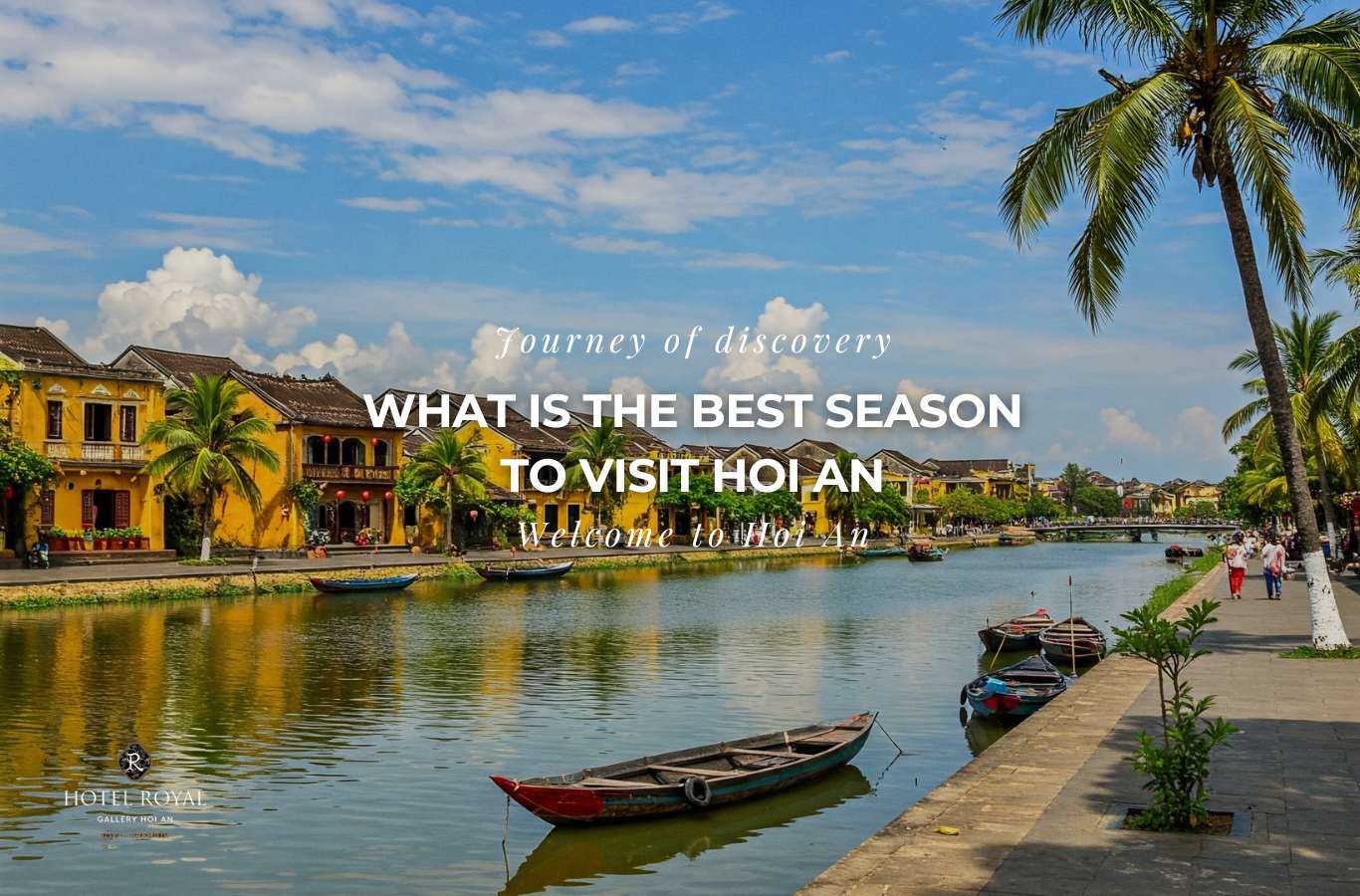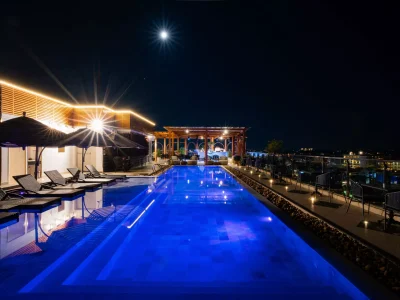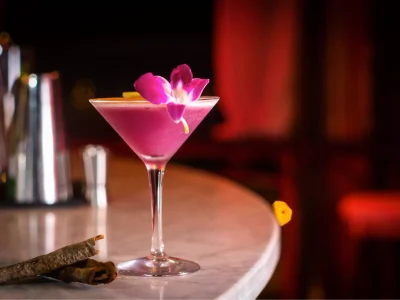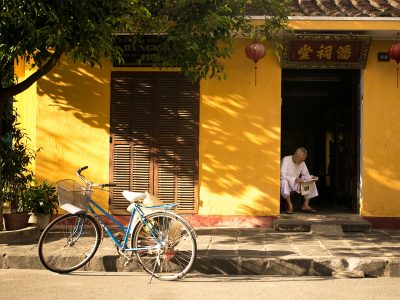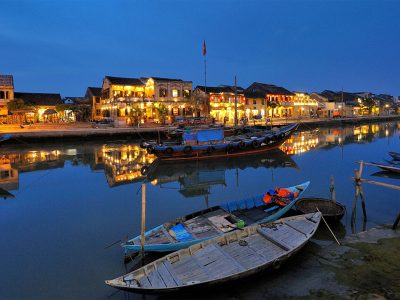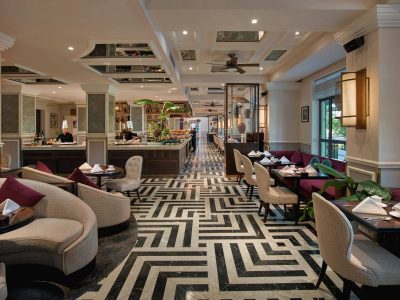The weather in Hoi An brings its own charm each season, painting a stunning picture that captivates every visitor. So, someone once asked, “What is the best season to visit Hoi An?” Let’s find the answer in the article below by Hotel Royal Hoi An Gallery!
Table of Contents
ToggleIntroduction to the weather and climate of Hoi An
Hoi An is located in Quang Nam Province, Central Vietnam, and is known for its tropical monsoon climate with two distinct seasons: the dry season (from 2 to 8) and the rainy season (from 9 to 1 of the following year).
Dry season in Hoi An
Hoi An’s dry season, lasting from February to August, is marked by sunny weather, clear blue skies, and low humidity. Average temperatures range from 25 to 35°C, with the early months (February–April) being cooler and more comfortable compared to the hotter summer months.
From May onward, the weather becomes hotter, especially in June and July, when the midday sun can be quite intense. However, the air remains dry and breezy, unlike the humid conditions often found in southern regions.
Overall, the dry season offers the most favorable weather of the year for traveling to Hoi An, especially for those who enjoy outdoor activities and want to capture beautiful natural light in their photos.
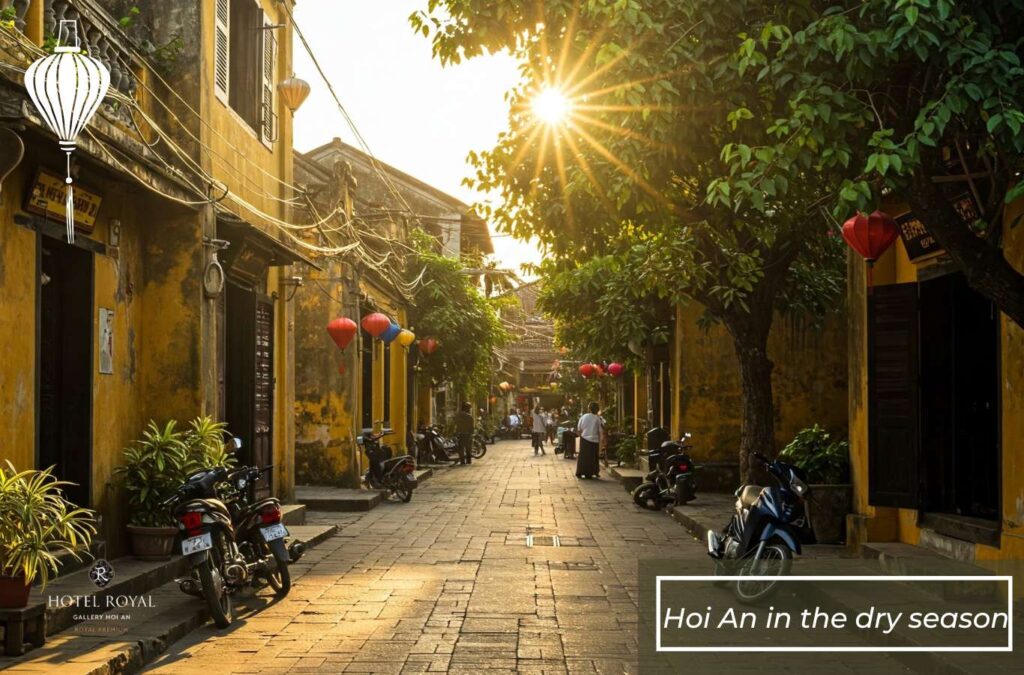
Rainy season in Hoi An
The rainy season in Hoi An typically begins around September and lasts until about January or February of the following year. It is characterized by frequent rainfall, high humidity, and the potential for localized flooding, especially in the ancient town area.
The weather during this season tends to be overcast, with occasional sudden showers, particularly in October and November. Average temperatures range from 20 to 26°C, offering cooler and more comfortable conditions compared to the hot summer months.
While prolonged rain may affect outdoor travel plans, the rainy season also brings a unique charm to Hoi An. The ancient streets, with their old brick pavements and shimmering lantern lights under the rain, create a romantic and peaceful atmosphere.
When river levels rise during the rainy season, parts of the ancient town may flood, providing a rare opportunity to explore the town by boat instead of on foot—a special and distinctive experience unique to Hoi An in the rain.
This period is also the off-season for tourism, with fewer visitors and a quieter ambiance, ideal for those who enjoy tranquility, want to avoid crowds, and experience a more serene, reflective side of Hoi An, unlike the vibrant dry season.
Read more: [2025] Nightlife in Hoi An: Top 11 experiences to explore
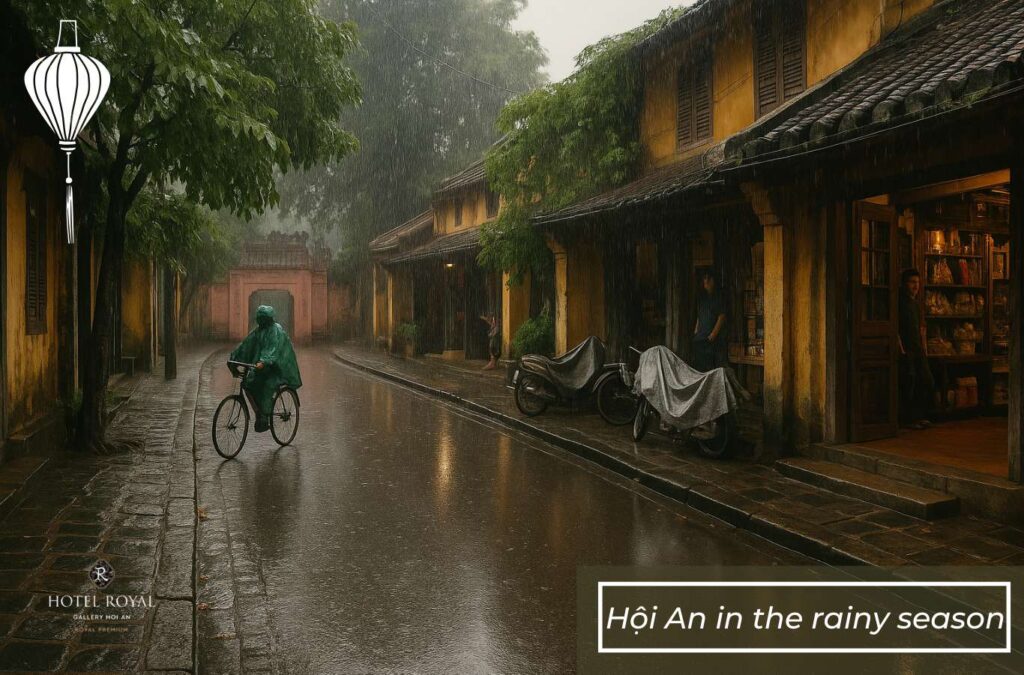
What is the best season to visit Hoi An?
Spring (February to April)
February to April is considered the best time to visit Hoi An. During this period, the weather is cool, with mild sunshine and little rain—ideal for strolling around the ancient town, taking photos, and joining outdoor activities. This is the early dry season, with pleasant temperatures, clear skies, and low humidity.
Notably, this time often coincides with Tet (Lunar New Year), when the old town is brightly decorated with flowers, lanterns, and a lively festive atmosphere.
Additionally, on the 14th day of the first lunar month (around February), the biggest Lantern Festival of the year takes place—when Hoi An sparkles with lights and colors, offering a perfect opportunity to experience traditional culture and capture stunning photos.
Read more: Hoi An Lantern Festival 2025: Best Dates, Activities & Travel Tips
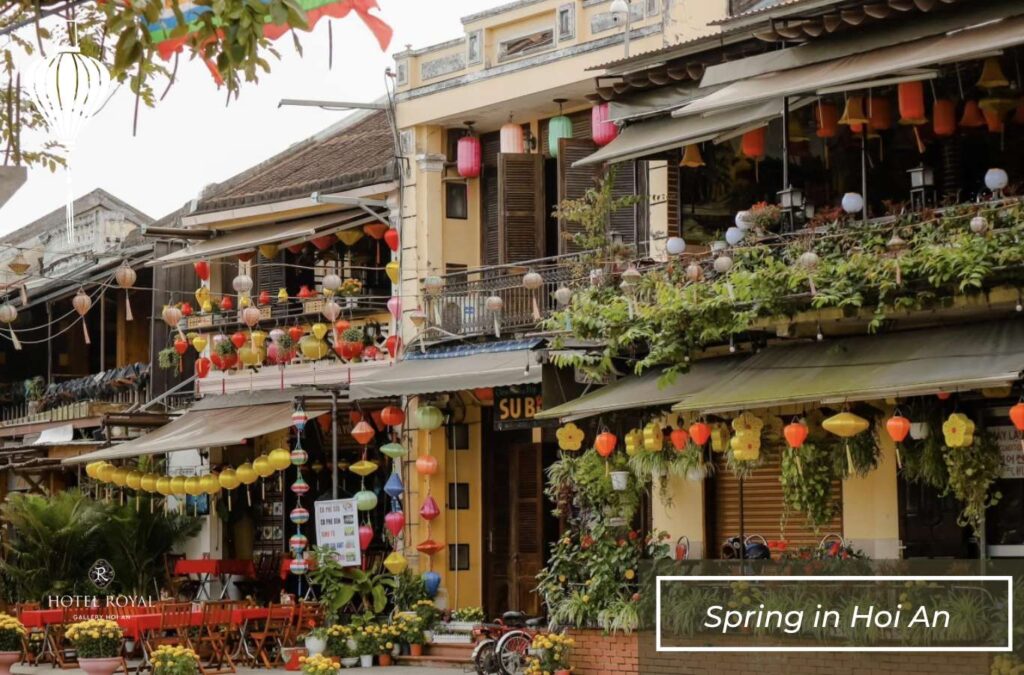
Summer (May to July)
If you love the beach and vibrant festivals, May to July is also an appealing choice. During this time, the weather is sunny and ideal for beach activities like swimming at An Bang or Cua Dai Beach, kayaking, and joining Hoi An’s cultural festivals.
However, this is also the peak tourist season, so it can be crowded and service prices may increase. Especially, temperatures can reach 33–38°C, which suits beach activities but requires careful sun protection.

However, not everyone can plan their schedule around the ideal season, so understanding the characteristics of the remaining periods will help you choose the right time and avoid wasting your vacation due to bad weather:
Autumn (August – November)
Hoi An enters autumn from August to early September, marking the transition between the dry and rainy seasons in the tropical monsoon climate. During this time, the weather remains sunny and pleasant, ideal for outdoor activities and beach visits at An Bang or Cua Dai Beach.
Compared to the peak summer season, this is when the ancient town of Hoi An becomes quieter, and hotel prices and travel services begin to ease.
From September to November marks the rainy season in Hoi An, with prolonged rain, overcast weather, and occasional short-term flooding, especially in October, the peak of the rainy season.
While it may not be the best time for beach activities, it is the golden period for travelers who enjoy tranquility and cultural experiences. The ancient town becomes quieter, exuding a rare, peaceful charm, making it perfect for relaxing stays at hotels and watching the rain from a wooden veranda. Room rates and services are generally much cheaper.
It’s a wonderful time for visitors to explore traditional villages such as Thanh Ha Pottery Village, Kim Bong Carpentry Village, or visit the Japanese Covered Bridge, ancient temples, or folk art performances as there are fewer tourists and the atmosphere is quieter.
Explore Japanese Bridge in hoi an, a unique architectural heritage.
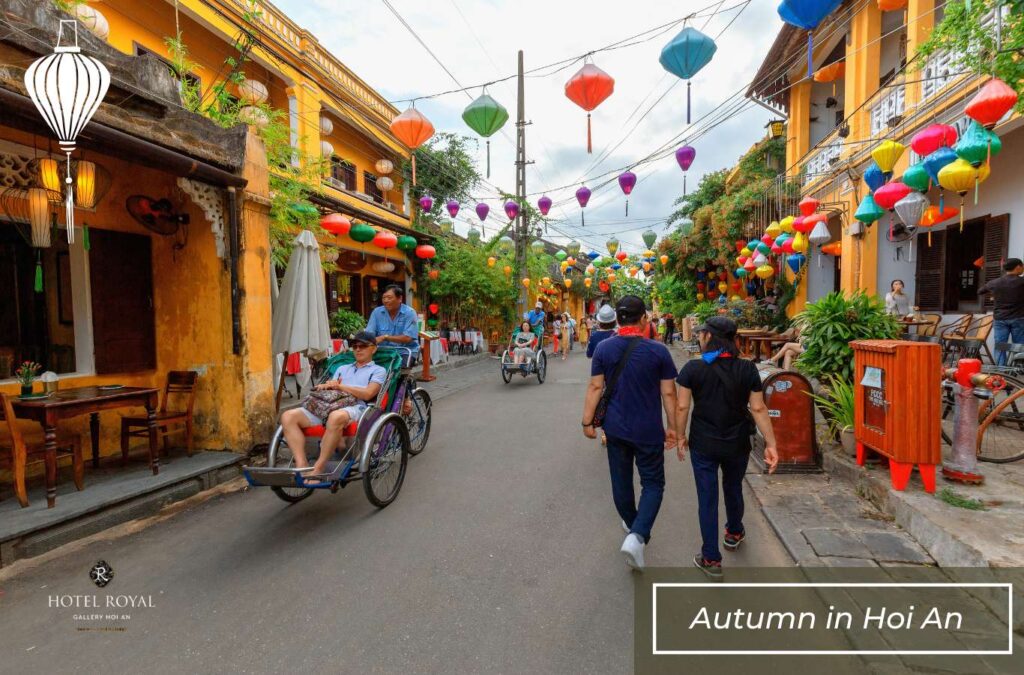
Winter (December – January)
From December to January, the weather in Hoi An begins to cool down, with occasional rain, although the total amount of rainfall has significantly decreased compared to the previous rainy season.
The end-of-year atmosphere gives Hoi An a unique beauty—peaceful, profound, and somewhat nostalgic—making it perfect for those who enjoy slow travel, especially couples or middle-aged travelers seeking a quiet, relaxing experience.
This is also the time when the ancient town often hosts cultural festivals and community activities in spaces such as the Japanese Covered Bridge, the Hoai River Square, or outdoor stages.
Visitors can choose to stay at hotels near or in the ancient town, enjoy hot local dishes such as Cao Lau, Mi Quang, or join night food tours. Compared to the peak season, this time offers a quiet, relaxing space—ideal for fully enjoying the tranquil beauty of Hoi An as it prepares for the coming spring.
Where to go on a 2-day, 1-night itinerary in Hoi An?
Many people only know about the ancient town and miss out on other unique experiences in Hoi An due to a lack of a proper itinerary. The following suggestions will help you make the most of your 2 days and 1 night:
Read more: Hoi An 2 days 1 night travel guide with the most detailed itinerary
Day 1: Explore the Ancient Town and Local Cuisine
Below are the experiences you should have on your first day in Hoi An to explore the culture and fully enjoy the local cuisine:
Time | Suggested Activities |
Morning | Travel to Hoi An, check-in at a hotel or homestay near or within the ancient town. Enjoy a local breakfast with Cao Lau or Mi Quang. Visit historical sites: Japanese Covered Bridge, Tan Ky Ancient House, Phuc Kien Assembly Hall. Have coffee at Faifo Coffee, which offers a panoramic view of the ancient town from the rooftop. |
| Noon | Dine at Quán Bà Buội or Morning Glory – famous for chicken rice, rice cakes, and Bánh Vạc. |
Afternoon | Experience a boat ride on the Hoai River and release lanterns. Join a lantern-making class or a traditional cooking class with a local chef. |
Evening | Dinner at the Hoi An Night Market or riverside restaurants. Stroll through the ancient town when the lights are on – the most dazzling and vibrant time. Purchase handcrafted souvenirs from local villages, take photos for check-ins. Stay overnight at a hotel in the ancient town or a riverside resort. |
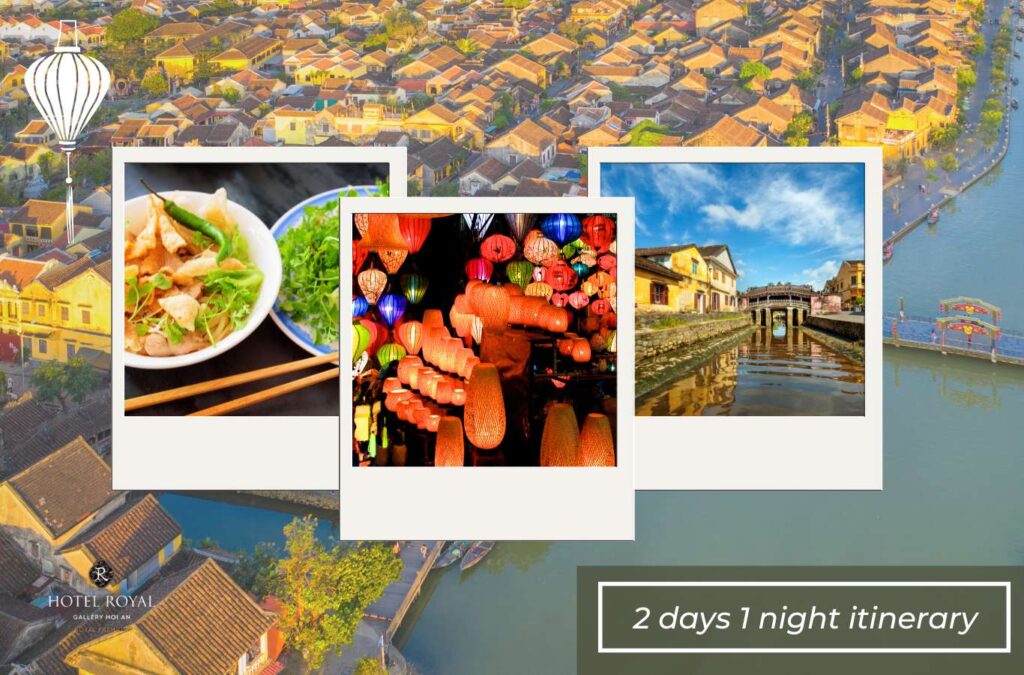
Day 2: Experience Nature and Traditional Villages
After a day of strolling through the ancient town and enjoying famous local dishes, the second day is your chance to get closer to nature and the rustic charm of Hoi An’s countryside. The itinerary for the second day is as follows:
Time | Suggested Activities |
Morning | Wake up early, have a light breakfast, rent a bike or motorbike to An Bang or Cua Dai Beach (if visiting during the dry season). Relax on the beach, enjoy coffee or a smoothie by the seaside. Alternatively, visit Thanh Ha Pottery Village or Tra Que Vegetable Village if you prefer a village experience. |
Noon | Have a light lunch at a seaside café or a small restaurant in the ancient town. Check out and conclude your journey. |
Where to stay when traveling to Hoi An?
Among the hundreds of accommodation options in Hoi An, it’s not easy to find a hotel that is both close to the ancient town for convenient exploration and offers enough privacy and tranquility to rest after a long day. Hotel Royal Hoi An Gallery is the ideal choice that combines both of these factors.
Located right beside the picturesque Hoai River, the hotel is just a few minutes’ walk from the ancient town, making it easy to enjoy the heritage atmosphere without worrying about transportation.
Inspired by the love story between Princess Ngoc Hoa and Japanese merchant Sotaro Araki, the design here is a refined blend of Indochine style and Japanese beauty—creating a feeling that is both elegant and romantic.
The luxurious resort space at Royal Hoi An will take you away from the noise, yet still close enough to fully experience the spirit of Hoi An—where heritage and modernity meet in every experience.
Indulge in the most luxurious accommodation, the Presidential Suite. This exceptional retreat spans an impressive 70 sqm and offers guests a world of bespoke services, unparalleled comfort, stunning views, and indulgent amenities.
- 70sqm (753sq ft)
- 2 Adults
If you ask, “What is the best season to visit Hoi An?” Hotel Royal Hoi An Gallery would answer that there is no single answer to this question. Every season has its own unique charm. Whether it’s the bright summer sun or the gentle, quiet rainy days, Hoi An always has a way of making you fall in love and never want to leave.

